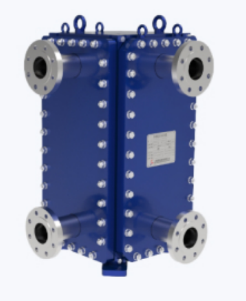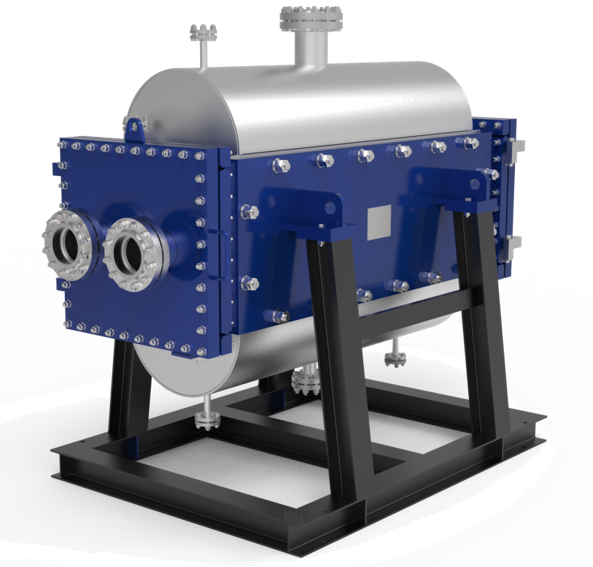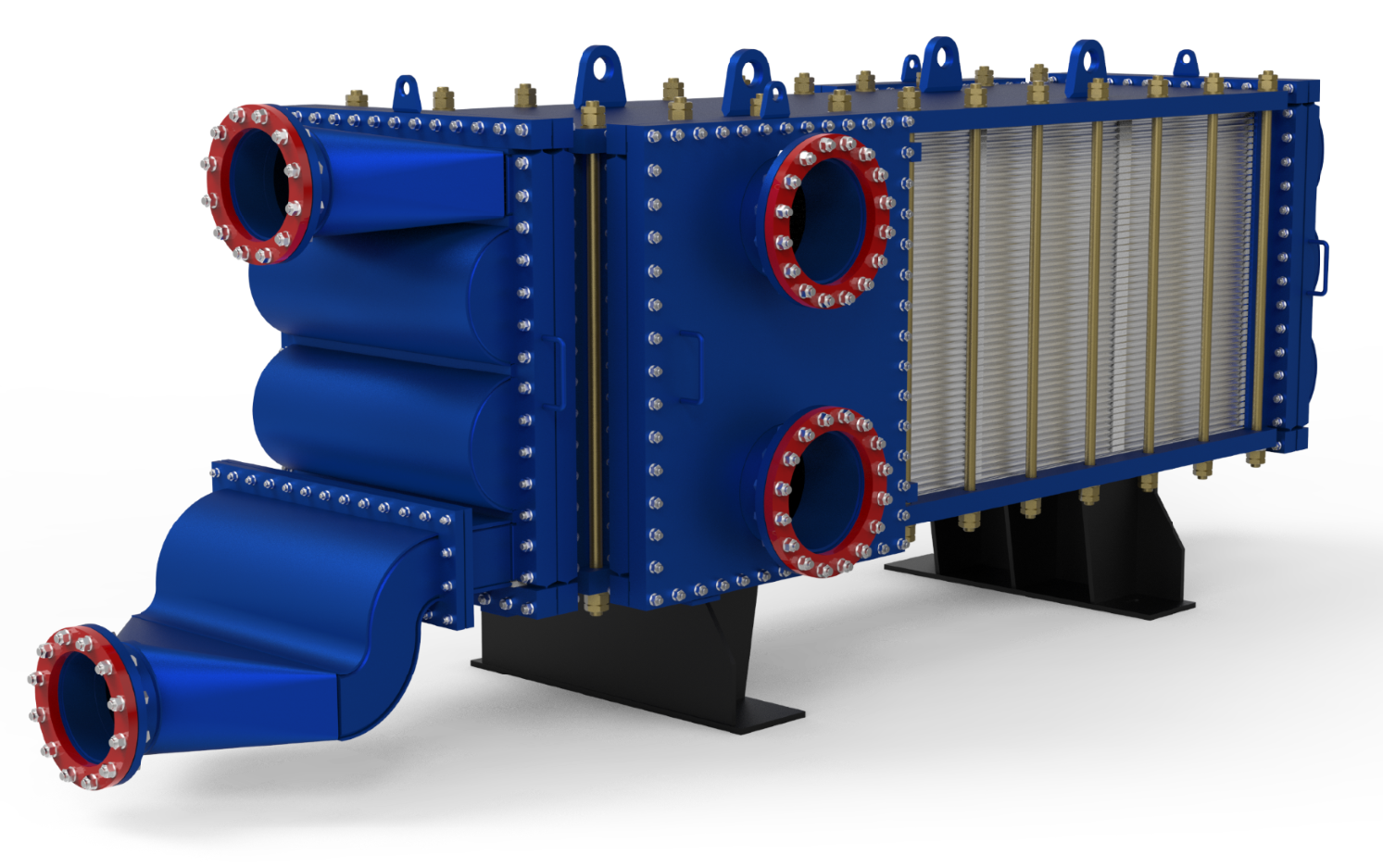Advantages of Welded Plate Heat Exchangers
In the world of industrial processes, efficient thermal management is not merely beneficial; it is fundamental. Heat exchangers stand as pivotal components, facilitating the controlled transfer of thermal energy between fluids. While various designs exist, the welded heat exchanger (WHE) stands out as a uniquely robust solution, specifically engineered to overcome the operational boundaries where conventional gasketed technologies falter. These units transcend the limitations of traditional gasketed designs, offering enhanced robustness and operational capabilities for demanding high-pressure, high-temperature, and aggressive media applications. Understanding their unique construction and advantages is crucial for industries seeking optimal thermal performance and long-term reliability.
What Defines a Welded Plate Heat Exchanger?
At its core, a heat exchanger operates on the principle of facilitating heat flow between two fluids at different temperatures without allowing them to mix. Traditional gasketed plate heat exchangers (PHEs) achieve this using a series of corrugated plates sealed by elastomeric gaskets, clamped together within a frame. While highly efficient and versatile for many duties, the gaskets inherently represent a limitation, particularly concerning temperature, pressure, and chemical compatibility.
The welded plate heat exchanger fundamentally re-engineers this concept by eliminating the need for inter-plate gaskets in the primary heat transfer area. Instead, the thin, specially corrugated metal plates are joined together using advanced welding techniques, typically laser or plasma welding. This creates a series of hermetically sealed channels. One fluid flows through the welded channels, while the second fluid passes through the channels formed between these welded pairs, often sealed at the periphery by durable gaskets compatible with the secondary fluid and operating conditions, or in some designs, also welded. This construction imbues the WPHE with significantly enhanced structural integrity and resilience.
Construction, Materials, and Thermal Efficacy
The manufacturing of a welded phe involves precision engineering. Corrugated plates, usually crafted from high-grade materials like stainless steel (e.g., 304, 316L), titanium, nickel alloys (like Hastelloy), or other corrosion-resistant metals, are meticulously stacked. The corrugation patterns are not arbitrary; they are carefully designed to induce turbulence in the fluid flow. This turbulence disrupts the boundary layer near the plate surface, dramatically increasing the heat transfer coefficient and thus the overall thermal efficacy of the unit compared to smoother flow profiles.
The plate pairs are then permanently joined by welding along the edges, creating a robust plate pack. This pack is then typically housed within a sturdy frame structure, comprising fixed and movable pressure plates, tightening bolts, and support columns, similar in principle to gasketed PHEs but often built to withstand higher forces. The welding process ensures a high degree of hermetic integrity, critical when handling volatile, toxic, or high-value fluids where leakage is unacceptable.
Most fully welded heat exchangers operate based on the principle of counter-current flow. The hot and cold fluids flow in opposite directions through their respective channels. This arrangement maximizes the mean temperature difference (LMTD) along the entire length of the heat transfer surface, enabling the most efficient thermal exchange possible and allowing for closer temperature approaches between the two fluids.
Compelling Advantages of Welded Construction
Replacing gaskets with welds unlocks a constellation of benefits, significantly expanding the operational envelope:
1. Superior Pressure and Temperature Tolerance: This is perhaps the most significant advantage. Without the constraints imposed by elastomer gaskets, WPHEs can operate reliably at substantially higher pressures and temperatures that would cause conventional gaskets to fail. This makes them ideal for steam applications, thermal oil systems, and high-pressure chemical reactions.
2. Enhanced Safety and Leak Prevention: The welded seams drastically reduce potential leak paths compared to gasketed units. This is paramount in applications involving hazardous, flammable, or environmentally sensitive fluids.
3. Compact Footprint: Like their gasketed counterparts, WPHEs offer high heat transfer rates within a relatively small volume and footprint, especially when compared to traditional shell-and-tube exchangers for equivalent duties. This saves valuable plant space.
4. Increased Robustness and Fatigue Resistance: The rigid, welded structure provides excellent resistance to pressure and temperature cycling, enhancing the unit's lifespan and reliability in demanding operational schedules.
5. Suitability for Aggressive Media: By selecting appropriate welded plate materials (like titanium or Hastelloy), WPHEs can handle highly corrosive fluids that would rapidly degrade standard gasket materials.
6. Reduced Fouling Potential (in specific designs): While all heat exchangers can experience fouling, certain WPHE designs, particularly wide-gap variants, are engineered to handle fluids with suspended solids, fibers, or higher viscosity more effectively than standard PHEs with narrow channels.
These inherent advantages lend themselves to various specialized designs tailored for specific industrial challenges. Let's explore two prominent types:
Different Types of Welded Plate Heat Exchangers
Recognizing that diverse applications demand tailored solutions, WPHEs are available in various configurations. Two prominent types offered by leading manufacturers include:
● Standard Welded Plate Heat Exchangers: These represent the workhorse category, designed for general high-temperature, high-pressure duties, and applications involving aggressive media where gasket compatibility is a concern. They offer a compact and efficient alternative to shell and tube heat exchangers across numerous industries. Excellent examples are HT-Bloc Welded Plate Heat Exchanger and TP Welded Plate Heat Exchanger, which embodies the core benefits of welded construction for enhanced thermal performance and reliability in challenging conditions.


● Wide Gap Welded Plate Heat Exchangers: Specifically engineered to address challenges posed by more difficult fluids, these exchangers feature wider channels between the plates. This design significantly reduces the risk of clogging and allows for smoother passage of viscous fluids or those containing suspended solids, fibers, or particulates. They are invaluable in industries like pulp and paper, sugar processing, ethanol production, and certain chemical applications where standard plate exchangers might quickly foul. The Wide Gap Welded Plate Heat Exchanger is tailored for such demanding tasks, ensuring operational continuity where other designs might struggle.

Broad Spectrum of Applications
The inherent robustness and efficiency of WPHEs lend them to a wide array of industrial applications:
Oil & Gas: Crude oil heating/cooling, gas processing, glycol dehydration, thermal oil systems.
Chemical Industry: Handling corrosive acids and bases, process fluid heating/cooling, solvent condensation, interchangers in reaction loops.
Power Generation: Turbine lube oil cooling, closed-loop cooling water systems, geothermal heating, feedwater preheating.
Food & Beverage: Processing applications involving higher temperatures or pressures (though gasketed units are often sufficient and preferred for ease of cleaning in sanitary applications).
Pharmaceuticals: Handling specific solvents or processes requiring high integrity and temperature/pressure capabilities.
Pulp & Paper: Black liquor heating, white liquor cooling (wide gap often preferred).
Addressing Common Questions
Several questions frequently arise regarding WPHEs:
● How do they differ from gasketed PHEs?
The primary difference lies in the sealing method between plates – welds versus gaskets – leading to higher pressure/temperature ratings and different chemical compatibility profiles for WPHEs.
● Can they handle fouling fluids?
Standard WPHEs behave similarly to gasketed PHEs regarding fouling potential based on channel geometry. However, Wide Gap WPHEs are specifically designed to better manage fluids prone to fouling or containing particulates.
● How are they cleaned?
Cleaning-In-Place (CIP) using chemical solutions is often feasible, similar to gasketed units. However, mechanical cleaning access might be more limited depending on the specific design (e.g., fully welded units offer less access than semi-welded). Manufacturer guidelines are essential.
● What about welding on the unit for repairs or modifications?
Field welding directly onto the heat exchanger body or plate pack after manufacturing is strongly discouraged. The high localized heat can damage the precision plates and existing welds, potentially compromising integrity and voiding warranties. Repairs typically involve specialized procedures or replacement of the plate pack.
● What factors guide selection?
Key considerations include operating temperatures and pressures, fluid properties (corrosivity, viscosity, solids content), required heat duty, allowable pressure drop, required materials of construction, and long-term operational reliability needs.
Conclusion: The Welded Advantage
The welded plate heat exchanger represents a significant advancement in heat transfer technology, providing a robust, efficient, and reliable solution for applications that push beyond the capabilities of traditional gasketed designs. Their ability to withstand extreme temperatures and pressures, handle aggressive media, and ensure high operational integrity makes them indispensable in critical processes across diverse industries. Whether opting for a standard configuration like the TP Welded Plate Heat Exchanger or a specialized solution like the Wide Gap model for challenging fluids, WPHEs deliver superior thermal performance where it matters most.
lf your process demands exceptional thermal control under challenging conditions,leveraging the advantages of welded plate heat exchanger technology is key to enhancing efficiency and reliability. We invite you to explore the detailed specifications of our HT-Bloc Welded Plate Heat Exchanger and TP Welded Plate Heat Exchanger and Wide Gap Welded Plate Heat Exchanger, or contact our thermal engineering experts today for a consultation on how these solutions can optimize your specific operations.
Email: info@shphe.com
WhatsApp /Cell: +86 15201818405




